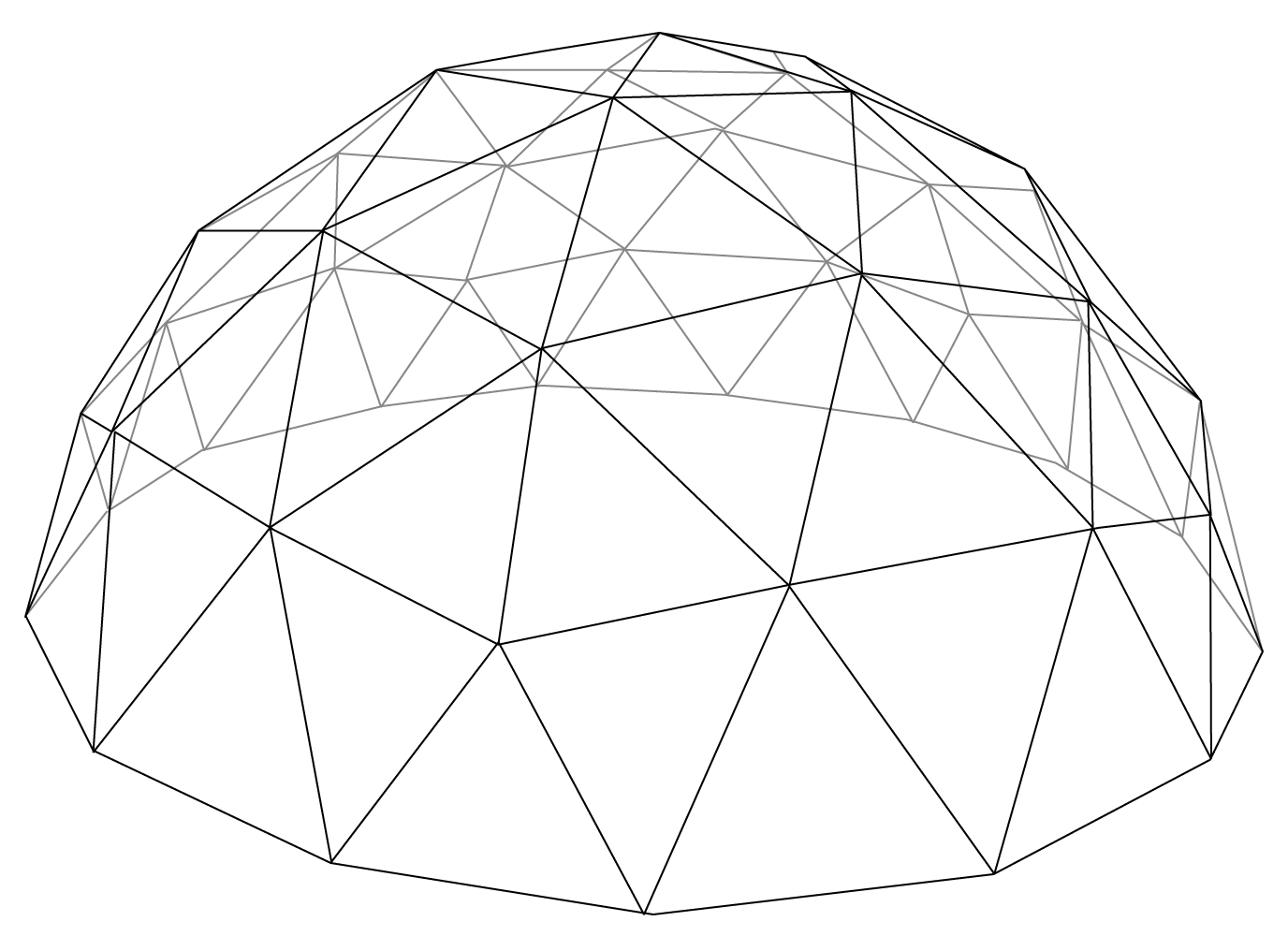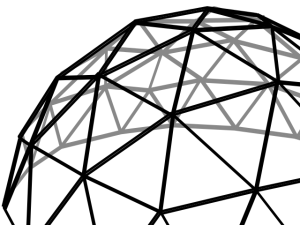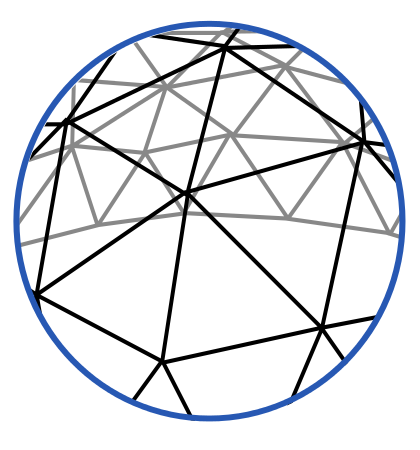Why go round instead of square? For starters take a look at how nature designs everything. The movement and momentum of life happens on a platform based on the circle. There aren’t really any straight lines or squares in the growth of life and movement of the heavens. So why do we build most everything using squares or straight lines? We don’t live in MineCraft, so we may want to explore the world of circles and natural ratios to build our future homes and products. Here are just a few very good reasons why this makes sense.
The geo dome structures weigh less when completed because of the air-mass inside the dome. When it’s heated warmer than the outside air, it has a net lifting effect -like a hot-air balloon. This is almost unnoticeable in smaller structures, like houses, but as geodesics are based upon spheres, the effect increases geometrically with size. So you’d be able to notice it in a sports stadium, and a sphere more than a half mile in diameter would be able to float in the air with only a 1 degree Fahrenheit difference in temperature.
“The Geodesic Dome is, simply stated, the strongest, lightest and most efficient means of enclosing space yet devised.” American Institute of Architects. This says it all, but here are some more reasons. Geodesic domes use about a third less building materials for some substantial savings. The primary factor affecting efficient use of materials and energy in a structure is its shape. Think of a soap bubble. A sphere represents the smallest amount of material surface area needed to enclose a given volume of space. A divided sphere becomes one of the most efficient shapes known to enclose a given floor area.
The lower the total outside surface area (walls and ceilings) the greater the efficiency in energy use for heating and cooling. A dome has approximately one-third less surface area to the outside than a box-style structure. The amount of surface area exposed to the elements has a much greater impact on energy efficiency than insulation values. Efficient airflow inside a dome adds to the energy savings further; the curved surface of a dome provides a natural circulation of internal air. Outside the dome, the round shape provides an aerodynamic effect; so wind passes over the dome with less resistance. In comparison, a box-style structure provides a flat barrier to wind, creating positive wind pressure and suction. Ever notice how a door will slam shut when a door to the outside is left open, or air blows in from under a closed door?
The nature of the spherical design provides strength because the stress is shared evenly by all the points of the structure. The dome shape allows resistance to movement from earthquakes, high winds, and spreads stress from snow load evenly throughout the structure. The geometry of the triangle offers additional strength to the dome shape. Interior advantages of the dome include greater freedom of floor plan design, high ceilings, and even light, heat, and sound distribution. Domes display superior light characteristics as spherical shapes tend to amplify light while rectangular shapes tend to trap light. Acoustical advantages include more even sound distribution and less outside noise infiltration.
Most interesting and important are recent studies that show that the full spectrum of energy waves are available in the center of a dome. In a box, the energy waves are blocked. Thus the saying, “I feel like I am boxed in…” We seem to know instinctually and feel physically the comfort of being inside a dome. The importance of the natural energy waves all around us is just beginning to be understood. Lastly, let’s not forget they are simply good looking and cool.




